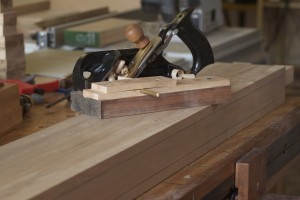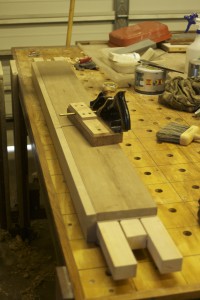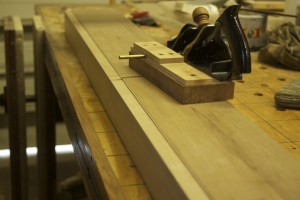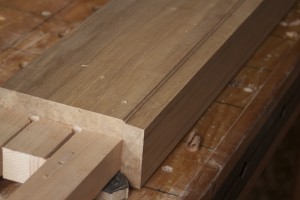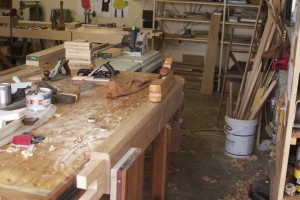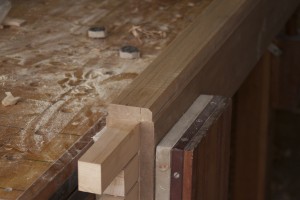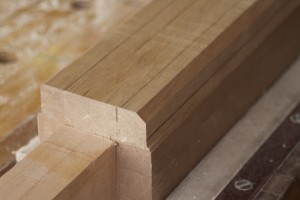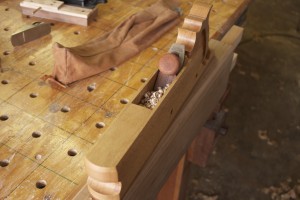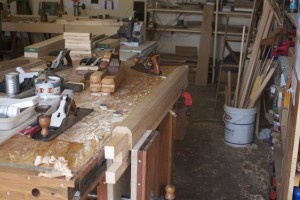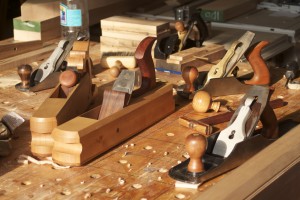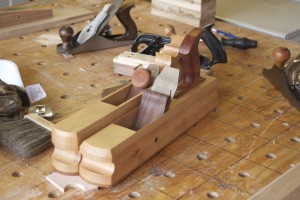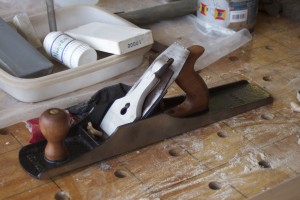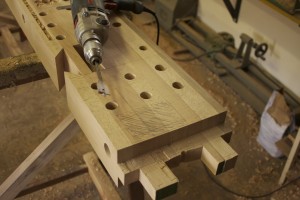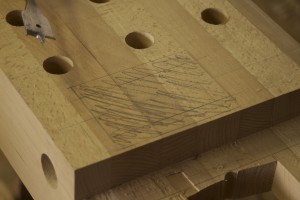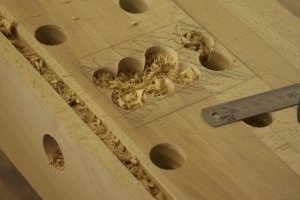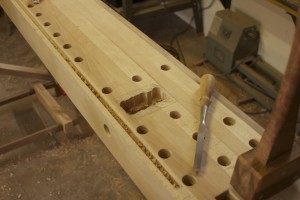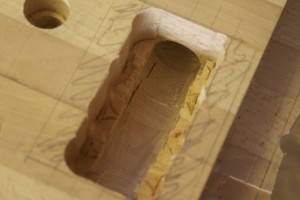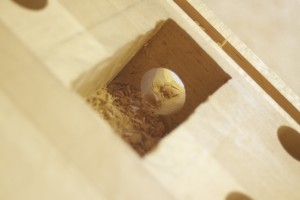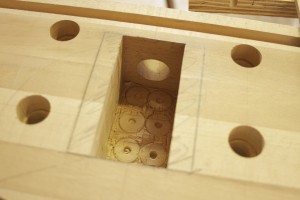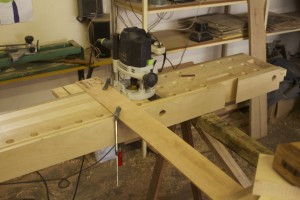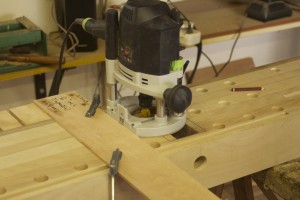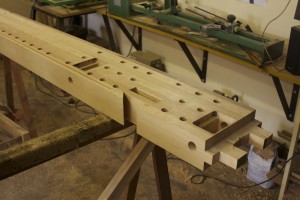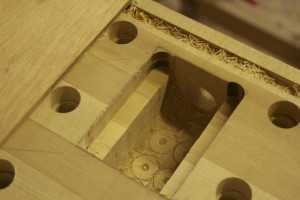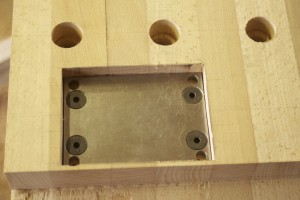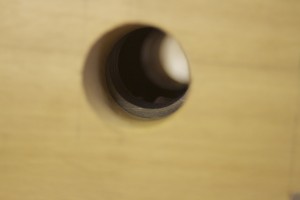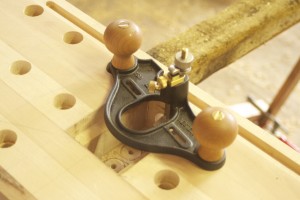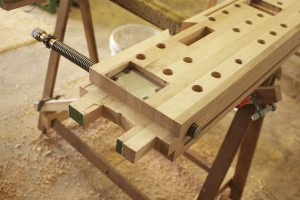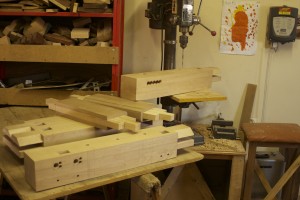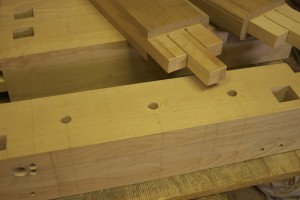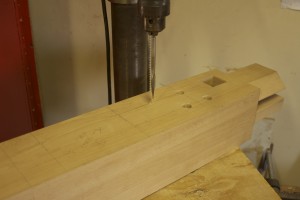15/9/2014
I started off the weekend by using my no 78 Stanley rabbet plane with it’s sexy (yeah right) shop made fence to shape the moulding at the top of the long stretchers. The moulding has three primary functions. It aims to hide the fact that it is a laminated beam of Witpeer. You will find that the two small steps are placed to hide the lamination line on the side of the stretcher.
The chamfer I am working on here creates a v-shaped surface for the foot of the sliding deadman to slide on and hopefully adds some aesthetic value too.
Here you can see the array of planes used the create the moulding.
I then moved on to seating the twin screw vise stand offs. The 30 mm diameter holes meant to accept the ACME threaded rod were already drilled through the top a week or so ago. I used an electric hand drill with a spade bit to remove the bulk of the waste before chopping the rest out with my Lie-Nielsen ½” mortise chisel.
That got me this far.
The electric router removed most of the waste for the shoulders (so to speak) of the stand offs. I then used the router plane pictured to dial it in to the exact depth.
The result.
Next I marked out and drilled the holdfast holes in the legs on the drill press. You will notice that the ¾” holes are relieved to 1″ from the back of the leg.


